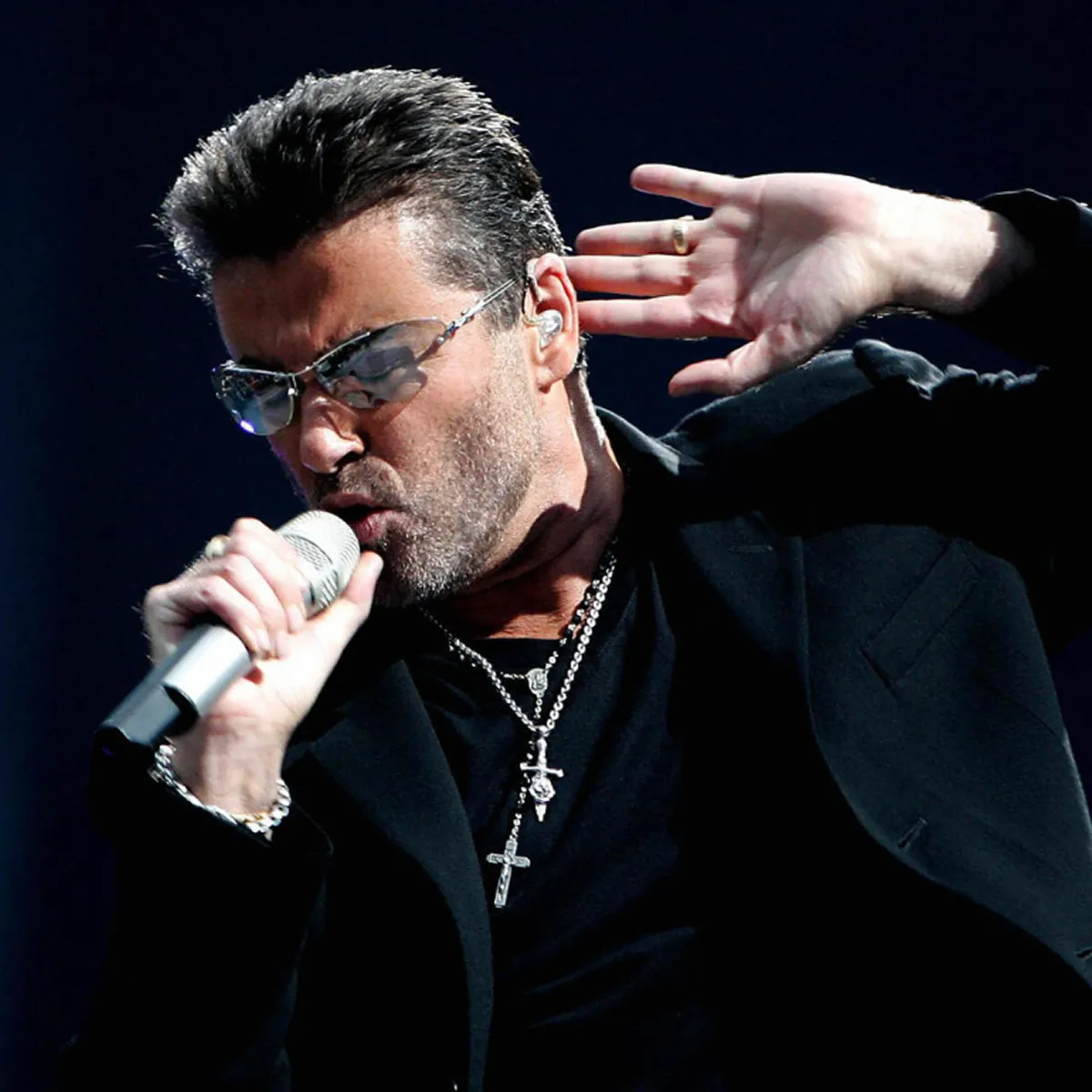Music and Social Media Partnerships
The Legal Landscape of Music and Social Media Collaborations
The relationship between music and brand promotion is not new. In the twentieth century, artists frequently endorsed products through television, radio, and print campaigns. What has changed is the medium and the scale. The rise of platforms such as Instagram, TikTok, YouTube, and Twitch has created an environment in which musicians act not only as performers but also as digital publishers and influencers. A single post can reach millions of followers and can alter consumer behaviour overnight. This immediacy has made brand partnerships highly lucrative but also fraught with legal complexity.
At the centre of every collaboration lies the law of contract. English law requires four conditions for formation: offer, acceptance, consideration, and intention to create legal relations. An offer may be as simple as a brand proposing that an artist post three Instagram stories in exchange for £5,000.Acceptance is communicated when the artist agrees. Consideration is present in the form of payment and performance. Intention is presumed in commercial contexts. Once these are present, the partnership is legally binding, regardless of whether a formal written agreement has been executed.
Yet contract law is only the starting point. Partnerships of this nature are overlaid by multiple regulatory and statutory regimes. The Advertising Standards Authority (ASA) applies the CAP Code to influencer marketing. Rule2.1 requires that advertising is obviously identifiable as such. Posts that fail to disclose commercial intent risk sanction. In recent years the ASA has repeatedly upheld complaints against celebrities and influencers, including musicians, for failing to use labels such as “#ad” or “paid partnership.” For example, in2020, the ASA ruled against several high-profile figures who had promoted products without disclosure, reminding the industry that consumer awareness is paramount.
The Competition and Markets Authority (CMA) reinforces this position under the Consumer Protection from Unfair Trading Regulations 2008. A misleading mission, such as failing to declare that content is sponsored, can constitute an unfair commercial practice. The CMA has published guidance specifically directed at influencers and brands, requiring transparency. Musicians who breach these obligations risk not only reputational damage but also contractual liability. Many brand agreements expressly require compliance with advertising standards. A breach can trigger indemnities, repayment of fees, or termination.
Intellectual property law plays an equally critical role. Partnerships almost always involve use of the musician’s name, likeness, or creative works. English law does not recognise a standalone “image right,” but protection is achieved through passing off and contractual terms. The case of Irvine vTalk sport Ltd (2002) confirmed that unauthorised use of a celebrity’s image to imply endorsement could constitute passing off. Musicians must ensure contracts define how their image is used, the territories, the duration, and the platforms. Without limits, brands may continue using content long after the partnership ends.
Copyright issues are equally important. Where music is used within branded content, licences are required for both the sound recording and the underlying composition. Labels, publishers, and collecting societies such as PRS and MCPS must be consulted. Failure to secure proper licences risks infringement claims. In one ASA ruling, a brand was criticised for using music in social media advertising without proper clearance, highlighting how copyright breaches intersect with advertising regulation.
Moral clauses illustrate the intersection of law and reputation. Brands are acutely sensitive to controversy. Contracts often contain provisions allowing immediate termination if the artist engages in behaviour that could cause public disrepute. These clauses are frequently drafted broadly, sometimes encompassing any action that might “tarnish” the brand’s image. For musicians, this creates significant risk. An offhand comment on social media could trigger termination and forfeiture of fees. Negotiation should limit such clauses to objectively serious misconduct, ideally defined as conviction of a criminal offence or conduct bringing widespread adverse publicity.
Data protection also features increasingly in these arrangements. Many campaigns involve targeted advertising, access to fan demographics, or use of mailing lists. The UK General Data Protection Regulation (UK GDPR) and the Data Protection Act 2018 regulate processing of personal data. Musicians who permit brands to use fan data must ensure lawful basis for processing, transparency through privacy notices, and compliance with international transfer rules. Failure to comply can attract penalties from the Information Commissioner’s Office. The ICO has made clear that misuse of personal data in marketing campaigns can constitute a serious breach.
Caselaw directly on social media partnerships is still developing, but lessons can be drawn from adjacent disputes. Passing off cases such as Irvine vTalksport show the courts’ willingness to protect celebrity goodwill. Advertising regulation cases demonstrate enforcement against misleading communications. Data protection enforcement by the ICO highlights risks in handling personal information. Together, they illustrate the multi-layered obligations that musicians face when engaging in collaborations.
Historical context adds perspective. Endorsement contracts have existed for decades, but they once operated within clear boundaries. A television advert or magazine campaign had a finite lifespan and predictable reach. Social media content, by contrast, can be shared, reposted, and archived indefinitely. A partnership intended as a short-term promotion may continue to circulate years later, long after the contractual term. This permanence underscores the need for precise drafting of usage rights.
The convergence of these legal regimes means that social media partnerships cannot be approached informally. Contract law provides the private foundation. Advertising standards impose public obligations. Intellectual property law protects rights in image and music. Consumer protection ensures transparency. Data protection regulates the use of personal information. For musicians, compliance is not optional. A misstep can trigger liability under contract, regulation, and statute simultaneously. Professional advice and robust drafting are therefore indispensable.
Contractual Structures and Common Clauses in Brand Partnerships
While the regulatory framework sets the outer boundaries, the practical rights and obligations of musicians and brands are contained in contracts. These documents vary in sophistication depending on the value of the partnership, but even the smallest arrangement should be reduced to writing. Without clear terms, disputes are inevitable. The purpose of this section is to examine the contractual structures most commonly used in social media collaborations, and to analyse the clauses that demand particular attention.
At the core, brand partnerships are either endorsement agreements or sponsorship agreements adapted to the social media context. An endorsement agreement typically involves the artist affirmatively promoting a product through posts, appearances, or music integration. A sponsorship agreement may involve broader association, such as naming rights for a tour or co-branding of merchandise. Increasingly, hybrid agreements combine elements of both. The contract should begin with a clear statement of scope, specifying whether the artist is merely promoting content online, appearing at live events, or permitting use of their music and image in advertising.
Deliverables are the practical foundation. Contracts should specify the number of posts, the platforms, the timing, and the format. An obligation to “promote” without more is hopelessly vague. A well-drafted clause might state that the artist will publish six posts on Instagram, three of which must be reels of at least fifteen seconds, to be posted on specified dates. Deliverables may extend to TikTok challenges, YouTube integrations, livestream appearances, or use of songs in promotional campaigns. Precision avoids disputes about whether obligations were met.
Payment clauses require equal care. Options include fixed fees, payable on signature or in instalments tied to deliverables, and performance-based structures, where bonuses depend on engagement metrics such as views, clicks, or conversions. In higher-value deals, royalties may be payable on sales, or the artist may receive equity in a start-up brand. Each carries tax implications. Income received as a fee is subject to income tax and National Insurance. Dividends and capital gains on equity are treated differently. Musicians should consider whether partnerships are channelled through corporate entities to manage liability and tax efficiency.
Exclusivity provisions are among the most contentious clauses. Brands typically seek to prevent the artist from endorsing competitors during the term. However, the breadth of exclusivity can be problematic. A clause prohibiting endorsement of “any beverage product” may prevent an artist from working with a wide range of companies. Negotiation should limit exclusivity to direct competitors, define categories precisely, and restrict the temporal scope. Post-term restrictions should be carefully resisted unless justified by substantial compensation.
Approval rights protect the brand’s reputation but can erode artistic authenticity. Contracts often require that content be submitted for prior approval. Brands may insist on veto powers overwording, visuals, or context. While understandable, this can sterilise creativity. Musicians should negotiate to preserve reasonable discretion, limiting approval to objective issues such as compliance with law or avoidance of disparagement. A compromise may involve a process where drafts are provided, but approval must be given within a defined timeframe, failing which the artist’s version stands.
Termination clauses are crucial. Most agreements include morality clauses, allowing the brand to terminate if the artist behaves in a way that brings disrepute. These can be drafted so broadly that they allow termination for trivial controversies. Musicians should seek to confine termination to serious misconduct, ideally defined as conviction of a criminal offence or conduct attracting widespread adverse publicity. Termination for convenience by the brand should trigger payment of the full fee, to prevent opportunistic withdrawal once content has been created.
Indemnities and warranties apportion risk. Brands often require the artist to warrant that content is original and compliant with law, and to indemnify the brand for losses arising from breach. These provisions must be narrowed. An artist cannot reasonably indemnify a brand against regulatory failures caused by the brand’s own instructions. Mutual indemnities are often appropriate, with each side accepting liability for its own acts and missions. Caps on liability should be sought, limiting exposure to the contract value.
Dispute resolution provisions take on particular significance in international collaborations. Global brands often insist on New York or California law. English musicians should push for English law where possible, or at least neutral arbitration. Arbitration offers confidentiality and ease of enforcement under the New York Convention. Mediation clauses provide lower-cost pathways to resolution before escalation.
Confidentiality provisions are standard. Both parties may access sensitive information: brands may reveal marketing strategies, and artists may share unreleased material. Mutual confidentiality obligations should apply during and after the contract. Exceptions for disclosures required by law or professional advisers are appropriate.
Intellectual property provisions determine ownership and usage rights. Brands often seek broad licences to use the artist’s name, likeness, and music across all platforms in perpetuity. This is rarely acceptable. Licences should be limited by geography, duration, and medium. A licence for use on Instagram during the campaign period is far narrower than a licence for all platforms worldwide forever. Ownership of new content should also be addressed. Where an artist creates videos or music specifically for the campaign, the contract must state whether copyright remains with the artist or is assigned to the brand. Retaining ownership and granting a limited licence is generally preferable.
Data protection clauses are increasingly inserted. Where fan data is collected through the campaign, the contract must allocate compliance responsibilities under the UK GDPR and Data Protection Act 2018. Brands may be data controllers, with artists acting as joint controllers or processors. Clear allocation prevents liability for breaches.
Together, these provisions form the architecture of brand partnership agreements. Deliverables define obligations. Payment clauses allocate reward. Exclusivity and approval rights balance commercial control against artistic authenticity. Termination and indemnities allocate risk. Dispute resolution, confidentiality, intellectual property, and data protection provisions provide safeguards. The complexity of these agreements underscores the necessity of legal advice. Informal arrangements leave gaps that are quickly exploited. Professional drafting ensures partnerships deliver commercial benefit without eroding rights or exposing artists to undue liability.
Practical Implications for Working Musicians in the Social Media Era
The legal and contractual principles described above have direct consequences for musicians at every career stage. Social media has democratised visibility, allowing emerging artists to cultivate audiences without traditional intermediaries. It has also generated new income streams through brand partnerships. These arrangements can provide stability during periods when touring is limited or recording revenues are constrained. At the same time, they create significant legal risks if approached without discipline.
For emerging artists, collaborations often begin with local businesses or start-up brands. Offers may involve free products, modest fees, or exposure. The temptation is to accept informally, posting content without contracts. This approach is hazardous. If a post constitutes a commercial communication, disclosure obligations under the CAP Code apply. A failure to label content as advertising risks sanction from the ASA and damage to reputation. Intellectual property issues also arise. An artist who uploads branded content without contractual limits may grant the brand implied rights to use their image or music indefinitely. Informal arrangements can therefore erode control over identity and creative output. Even at entry level, written agreements are essential to define scope, limit usage, and ensure compliance with advertising regulation.
For mid-tier artists, partnerships usually involve national brands seeking association with established audiences. Agreements may cover tour sponsorships, product endorsements, or social media campaigns with significant reach. At this stage exclusivity becomes critical. A clothing brand may insist on exclusivity across all apparel, effectively preventing the artist from working with any other label. Such provisions can foreclose valuable opportunities. Negotiation should confine exclusivity to direct competitors, define categories narrowly, and limit duration. Payment terms also require attention. Instalments tied to deliverables or brand approvals can create cash-flow issues if content is rejected. Musicians must insist on objective approval standards and payment schedules that provide financial security.
For established artists, global partnerships raise the stakes considerably. Brands may invest millions in association with a musician, expecting compliance with international standards. Contracts must specify governing law and jurisdiction, often with arbitration for confidentiality and cross-border enforceability. Approval rights are heavily contested. Brands typically demand final authority over content, while artists seek creative independence. Compromise may involve joint review procedures or objective standards. Moral clauses also take on greater importance. Broad provisions allowing termination for any behaviour deemed undesirable can undermine artistic freedom. Artists must negotiate narrower clauses tied to objectively serious misconduct.
Corporate structuring becomes crucial for artists entering high-value partnerships. Channelling agreements through limited companies separates personal and commercial liability. It also facilitates tax planning, allowing profits to be retained or distributed efficiently. Companies can also own intellectual property, licensing rights to brands under controlled conditions. This separation protects catalogues and image rights from exposure to claims arising from a single campaign.
Practical scenarios illustrate these principles. Consider a rising singer who posts promotional content for a beverage company without marking it as advertising. The ASA investigates, finding the post misleading. Negative publicity follows, damaging both artist and brand. A short contract requiring disclosure would have ensured compliance. Another example is a band agreeing to promote a clothing label without defining usage rights. Months later, the brand deploys the band’s image in a global campaign. With no contractual limits, the band has little recourse. A third scenario involves an international artist signing an exclusivity clause with a technology company. The provision is drafted so broadly that it prevents collaboration with any other digital platform for five years. The restriction proves commercially damaging. Narrower drafting would have preserved flexibility.
Regulatory breaches provide further cautionary tales. The ASA has investigated numerous influencers, including musicians, for failing to label posts as advertising. In one case, repeated non-compliance led to public naming and shaming, severely harming reputation. The CMA has also taken enforcement action against hidden advertising, warning that sanctions can extend to court proceedings. These examples demonstrate that compliance is not optional. Musicians must ensure that contracts incorporate clear obligations for disclosure, allocate responsibility for compliance, and provide indemnities where appropriate.
Data protection creates another layer of risk. Where campaigns involve collection off an data, musicians must ensure compliance with UK GDPR and the Data Protection Act 2018. A failure to obtain lawful basis for processing or to provide adequate transparency can result in enforcement by the Information Commissioner’s Office. Artists should insist that brands assume responsibility for compliance where data is collected through brand platforms. If data is shared, data sharing agreements must be executed to allocate obligations and liabilities.
From a strategic perspective, musicians should treat brand partnerships as integral parts of their careers, not peripheral add-ons. Informal arrangements may appear expedient but they expose artists to legal and reputational risk. Written contracts, professional advice, and careful negotiation are essential at every level. Emerging artists should focus on basic protections: deliverables, payment, usage rights, and disclosure. Mid-tier artists should add focus on exclusivity, approval, and termination. Established artists must incorporate sophisticated provisions on governing law, arbitration, moral clauses, and corporate structuring.
The central message is clear. Social media partnerships are powerful vehicles for revenue and visibility, but they are also potential liabilities if mishandled. Contracts provide the structure that allows opportunity to be harnessed without compromising control. Just as recording, publishing, and touring agreements determine the trajectory of a career, so too do brand partnerships in the digital age. For working musicians, mastery of these contracts is now an essential professional skill.
Our services
Commercial Partnerships & Digital Media

The modern music industry extends far beyond records and live shows. Artists increasingly rely on partnerships with brands, merchandising opportunities, synchronisation deals, and digital platforms to grow their careers and generate income. These arrangements can be highly rewarding, but without careful agreements, they can also dilute your rights or undervalue your contribution. At musiclegal.co.uk, we connect you with experienced professionals who understand how to protect your interests while unlocking the potential of commercial partnerships and digital media.
Contracts & Agreements

Every successful music career rests on clear, carefully written agreements. Contracts are not about limiting creativity but about protecting it. Whether you are an emerging artist negotiating your first management deal, a band agreeing how to share income, or a label setting out terms with a producer, written agreements ensure that expectations are understood and disputes are avoided. At musiclegal.co.uk, we connect you with experienced professionals who specialise in the music industry and understand both the business and the artistry. Our goal is to help you secure fair terms so that you can focus on the music.
Debt Recovery

Few things are more frustrating for musicians than not being paid for their work. Whether it is an unpaid gig fee, a delayed royalty payment, or a contract that has been ignored, unpaid income can create financial strain and damage trust. The music industry is fast moving, and chasing money can feel awkward or even risky if you fear losing future opportunities. At musiclegal.co.uk, we connect you with professionals who understand the realities of the industry and who can help recover what you are owed quickly, professionally, and without burning bridges.
Disputes & Conflict Resolution

The music industry is full of collaboration, but wherever there are creative partnerships there is also the potential for conflict. Disputes can arise between band members, between artists and managers, or over unpaid fees and royalties. Left unresolved, these issues can damage relationships and careers. At musiclegal.co.uk, we connect you with professionals who specialise in resolving music industry disputes quickly, fairly, and with as little disruption as possible, so that you can return your focus to the music.
Intellectual Property & Rights Protection
.webp)
Every piece of music begins as an idea, and that idea is intellectual property. Protecting it is the difference between retaining control over your work and watching it slip away. Copyright, performer’s rights, trade marks and brand protection all form part of the framework that allows musicians and businesses to safeguard what they create. At musiclegal.co.uk, we connect you with professionals who understand the music industry’s unique legal landscape, ensuring that your songs, recordings and identity are protected so that your career can grow securely.
Live Music, Touring & Events

The thrill of live performance is at the heart of every music career. From intimate club shows to major festival appearances, the live sector is where artists connect directly with their audience. But behind every performance sits a web of agreements covering payment, cancellations, liability, insurance, and logistics. Without proper documentation, artists risk financial loss, disputes with promoters, or even cancelled shows. At musiclegal.co.uk, we connect you with professionals who ensure that your live music contracts are clear, fair, and built to protect you, so you can take the stage with confidence.
Royalties, Publishing & Revenue Streams
.webp)
Royalties and publishing are the lifeblood of many music careers. They represent the money that flows when your music is played, performed, streamed, sold, or used in film and advertising. Yet the systems that govern royalties are notoriously complex, often leaving musicians underpaid or uncertain about what they are owed. At musiclegal.co.uk, we help you understand how revenue streams work, how to protect your rights, and how to make sure that you receive fair payment for your creative efforts.

.svg)



.webp)
.webp)


